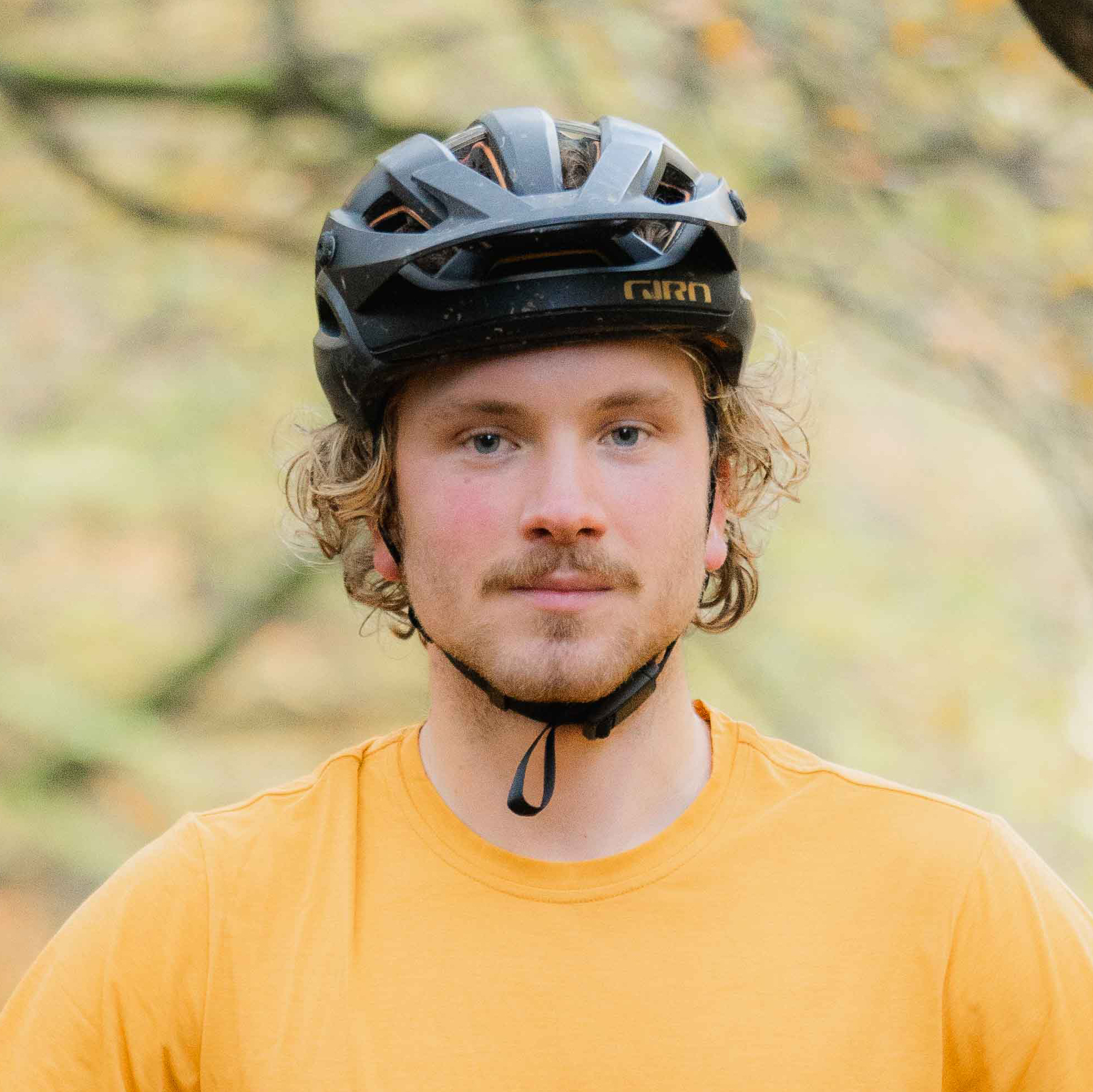Enduro bikes and trail bikes are two of the most popular types of mountain bikes. However, sometimes these full-suspension bikes are hard to tell apart, especially with many of the more downhill-oriented trail bikes sharing much in common with enduro bikes.
This can make knowing which type of mountain bike you should go for a tricky affair, and that’s before you get into choosing which brand or model you want to ride.
In this guide, we compare enduro bikes and trail bikes, and explain the key differences to help you decide which is best for your riding.
What’s the difference between enduro and trail bikes?
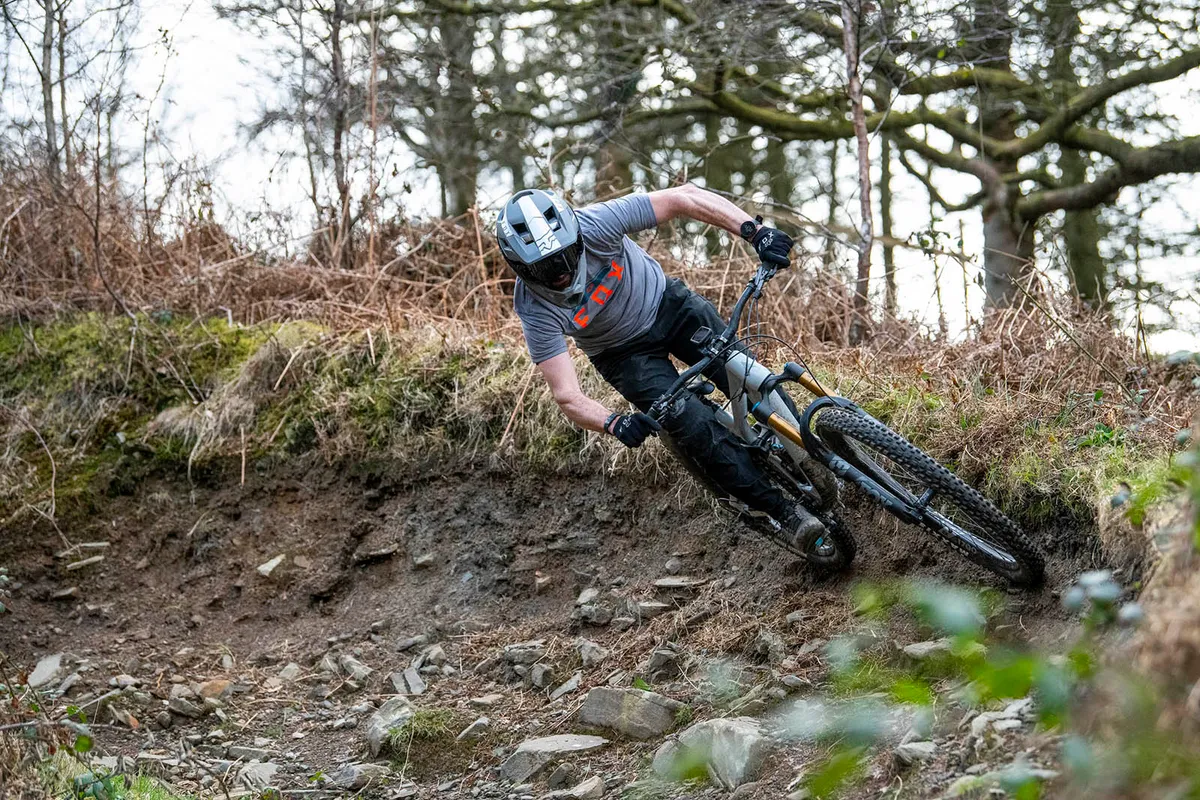
To understand the difference between enduro bikes and trail bikes, it’s worth considering their intended applications.
Enduro bikes were originally developed to meet the needs of the popular enduro race format. Enduro racing involves riders taking on multiple timed downhill stages, with the fastest cumulative time taking the win. The transitions between each stage are not timed, but riders have a maximum time allocated to finish all stages.
The best enduro mountain bikes should be great descenders, inspiring confidence by delivering a stable and predictable ride on even the fastest and roughest trails. When climbing, an enduro bike should be comfortable, placing the rider in an efficient pedalling position to spin back up to the top of the hill before taking on the next timed stage.
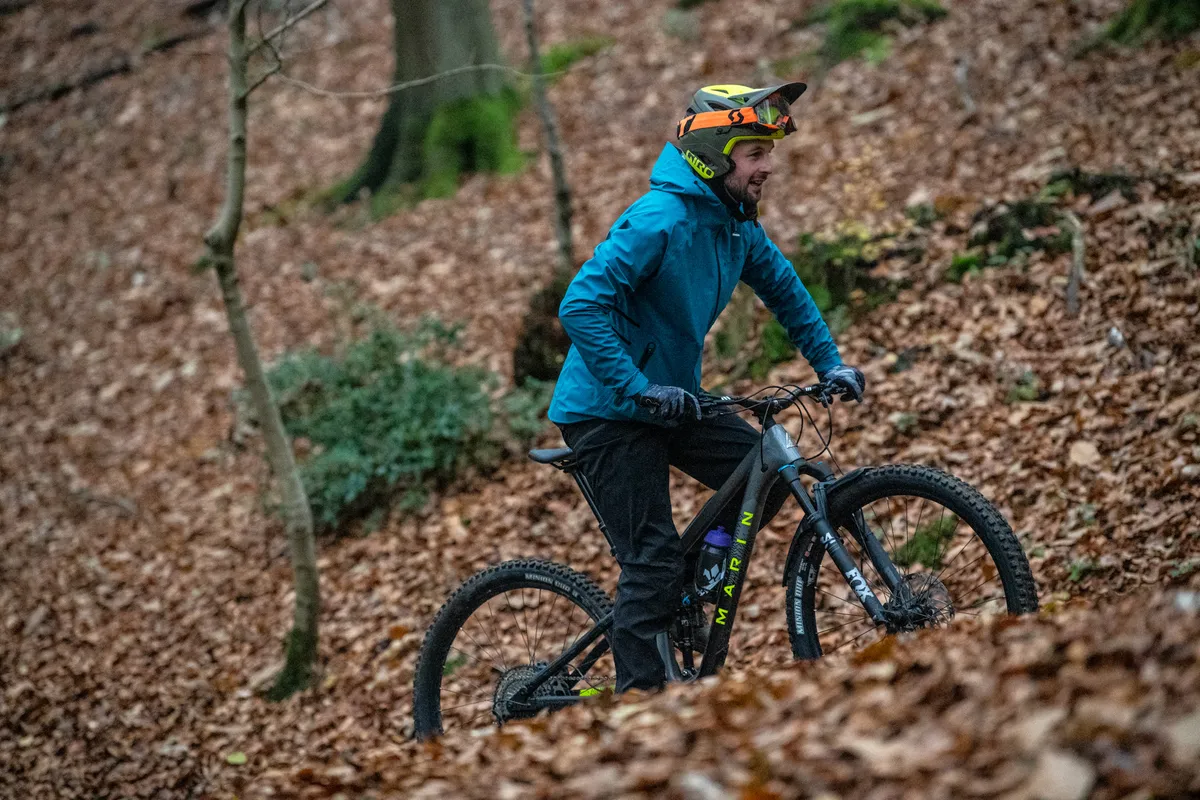
Trail bikes are designed with pure riding fun in mind, offering riders a platform that will eke every bit of enjoyment out of their riding.
The best trail mountain bikes have a rounded character. They should balance manoeuvrability and efficiency on flatter sections with confidence and stability when descents get steep. Trail bikes should feel energetic on climbs, encouraging you to get to the top of gradual ascents or sharp inclines.
These different characteristics are achieved through geometry, suspension travel, component choices and more. Let’s find out how and why these differences set trail bikes and enduro bikes apart.
Trail bike vs enduro bike geometry
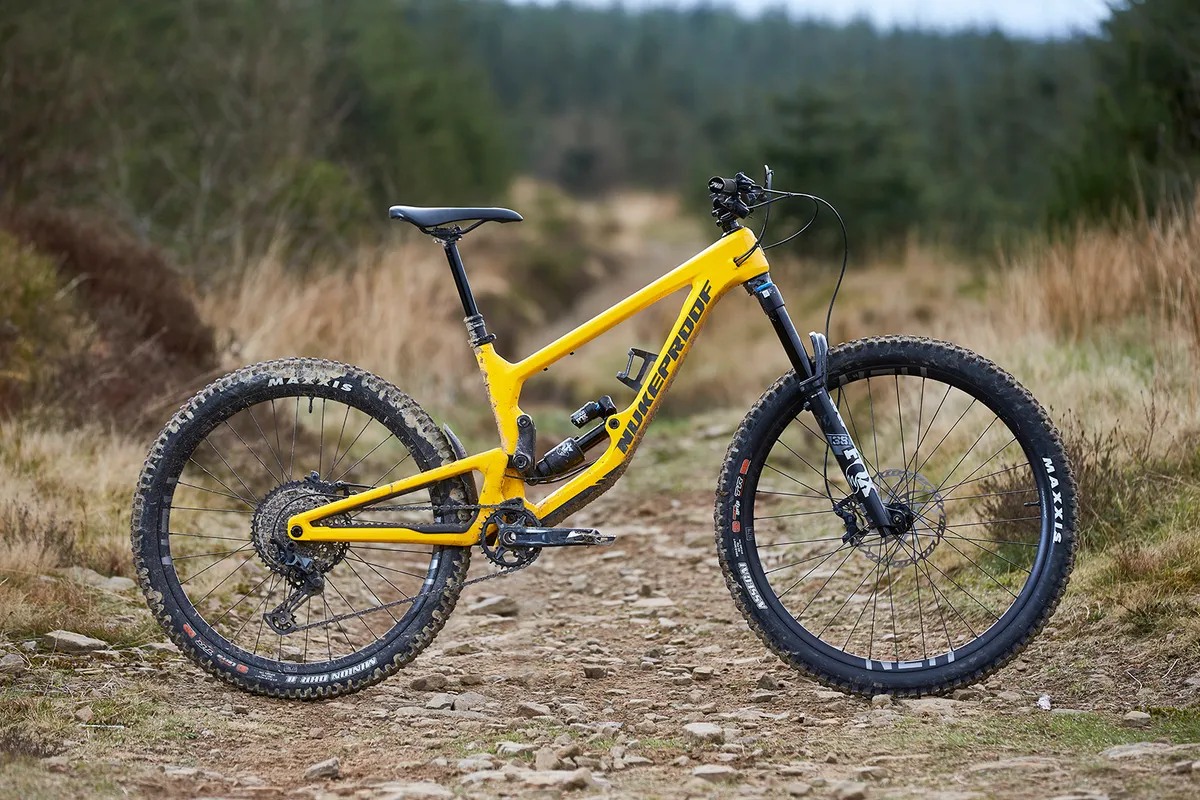
Trail bikes and enduro bikes aren’t too dissimilar when it comes to geometry, but there are some key differences that help tailor the bikes to their intended applications.
Enduro bikes will generally have a longer wheelbase and reach than trail bikes, combined with a slacker head tube angle. This makes them more stable at high speeds and more planted on rough and steep trails. The flipside to this is the long and slack geometry means they require more rider input to get airborne or change direction quickly at slower speeds or on flatter trails.

While trail-bike geometry isn’t at the polar-opposite end of the spectrum from enduro bikes, the reach and wheelbase may be slighter shorter and the head tube angle may be steeper. As a result, trail bikes tend to feel more lively on a wider range of trails, while sacrificing some descending capabilities at the top end of speed and roughness.
Enduro and trail bikes share relatively steep effective seat tube angles, with both often sitting in the 76 to 78 degrees range. This positions the rider over the bottom bracket for a comfortable and efficient pedalling position.
Suspension and travel
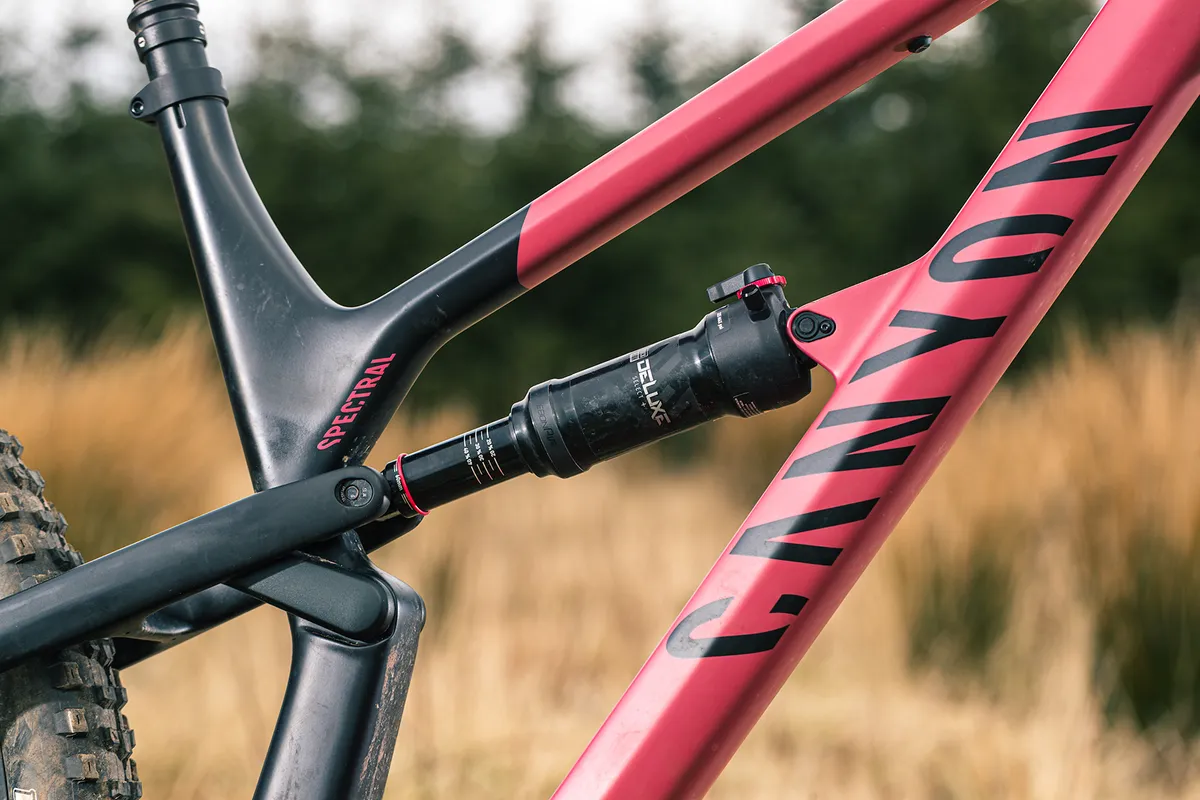
Designed to be versatile, trail bikes commonly have between 120 and 160mm of suspension travel.
Some trail bikes will have rear shocks providing 120mm of travel. These bikes will appeal to riders who value climbing efficiency over descending prowess, offering a ride that could be compared to a capable cross-country bike.
At the other end of the spectrum, trail bikes with 160mm of travel are designed for maximum fun on the descents, while forgoing some of that climbing efficiency.
In the middle of the range, trail bikes with 140mm of travel are well equipped for trail-centre riding, capable of tackling technical climbs and descents.
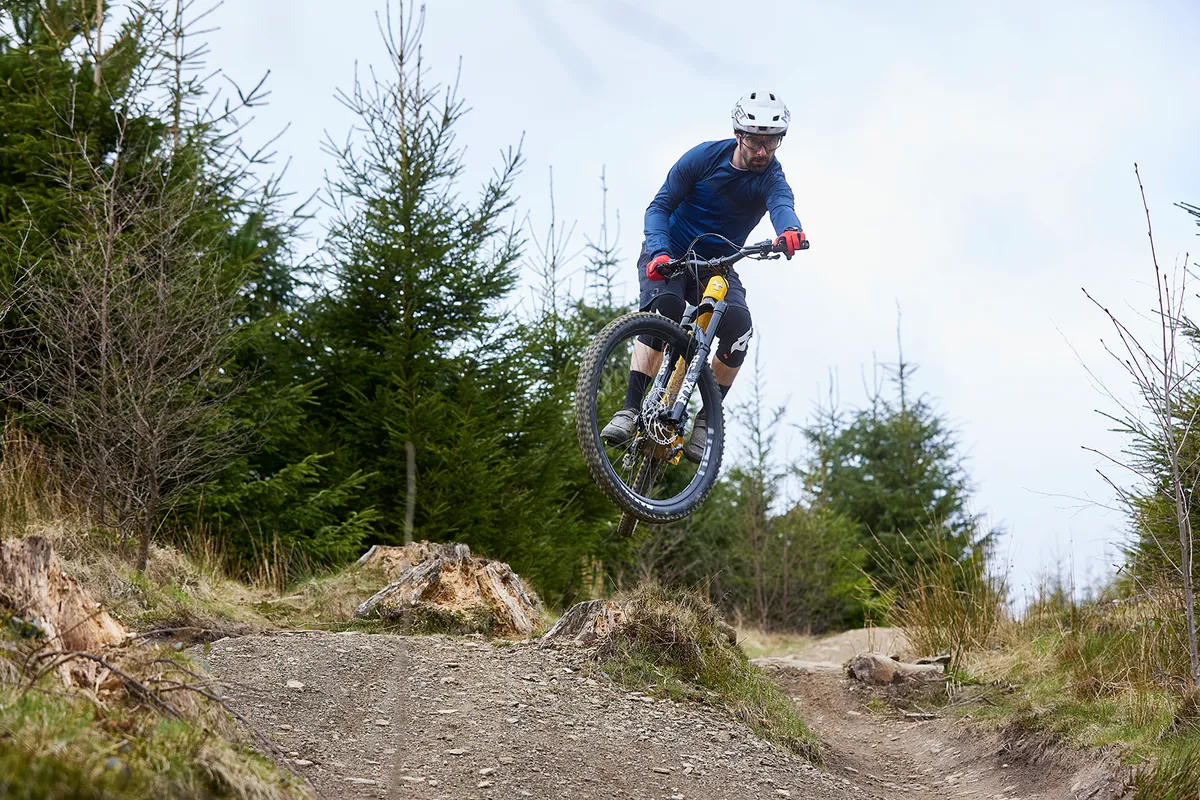
Enduro bikes need to be capable of absorbing big hits at high speed. It’s standard to see them sporting 150 to 180mm of suspension travel, with most bikes occupying the upper end of that bracket.
The variation in suspension travel often comes down to the individual brand and its take on what makes a fast enduro bike. Some brands lean towards slightly shorter travel and more manoeuvrability, whereas others make their bikes as burly and capable as possible.
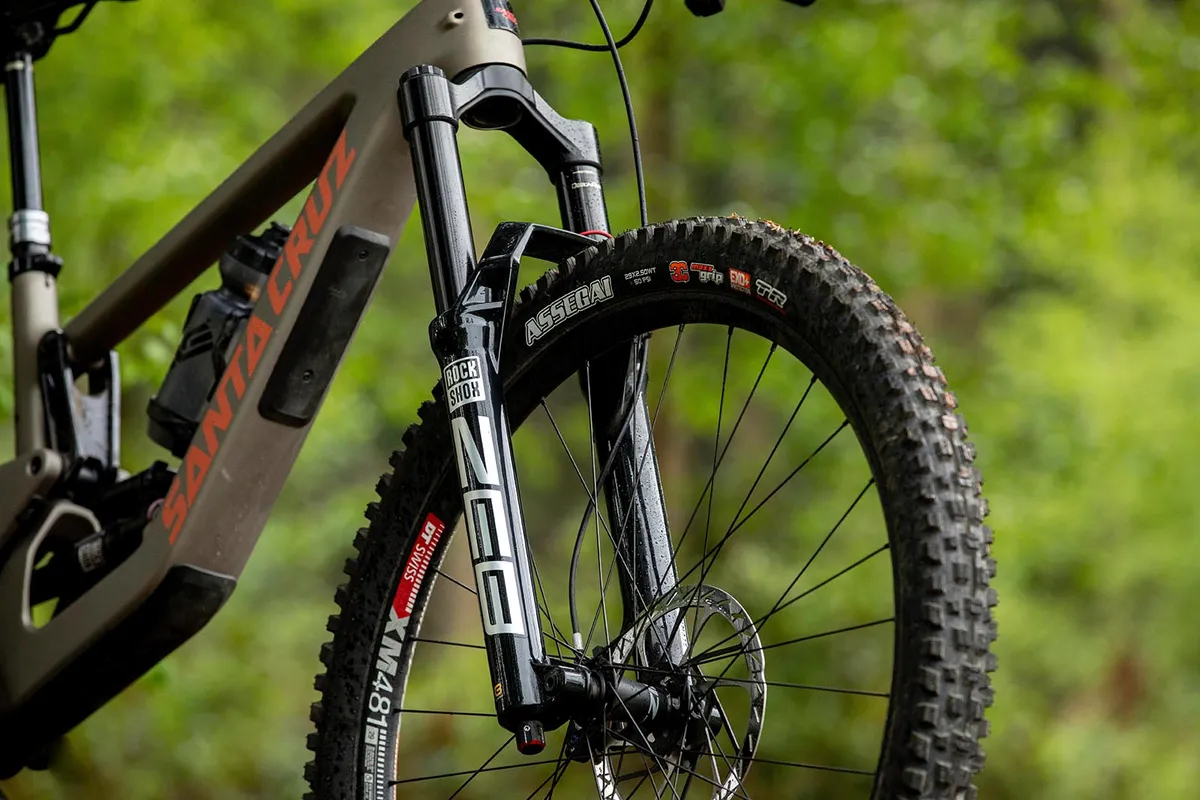
The long-travel suspension forks found on enduro bikes need to be stiffer than their shorter-travel counterparts to deal with heavy compressions. That is why enduro bikes commonly have forks with 35 to 38mm stanchions, prioritising stiffness and rigidity at the cost of weight.
Trail bikes are often specced with 34 to 36mm stanchions, achieving suitable levels of stiffness, while keeping weight down.
How much suspension travel you need depends on your local trails and your riding style.
If you predominantly ride fast and rough descents with drops, jumps and other technical features, a bike with upwards of 150mm travel will provide a far more forgiving and confidence-inspiring ride than a bike with 120mm of suspension.
However, if you enjoy the ups as much as the downs and want a bike that feels alive on any trail, you may be better suited to something in the 120 to 140mm travel range.
Frame material
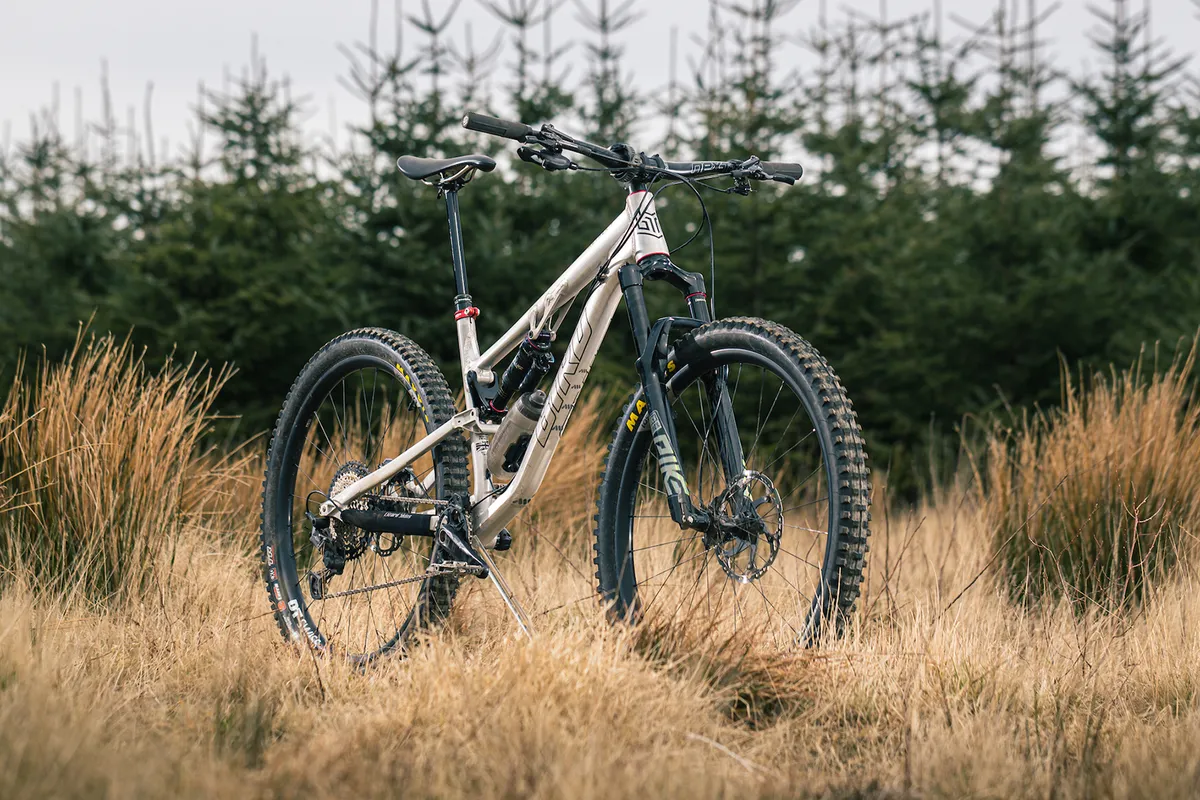
There are two common frame materials used for enduro and trail bikes – carbon and aluminium. Aluminium is prized for its durability, offering a decent strength-to-weight ratio at an affordable price. Although more expensive, carbon is a popular choice due to its lower weight and increased stiffness.
Steel is a third option, bringing a blend of strength, durability and ability to absorb harsh vibrations from the trail, but it's a niche option and often comes with a premium price tag.
However, frame material isn’t the defining factor in the enduro bike vs trail bike debate. The design and weight of the frame are more important.
Due to their intended application, trail bikes are expected to undergo less load than enduro bikes, enabling manufacturers to build their trail bike frames lighter. Paired with their geometry, this makes trail bikes more lively to ride on flatter terrain.
Do I need a carbon frame?
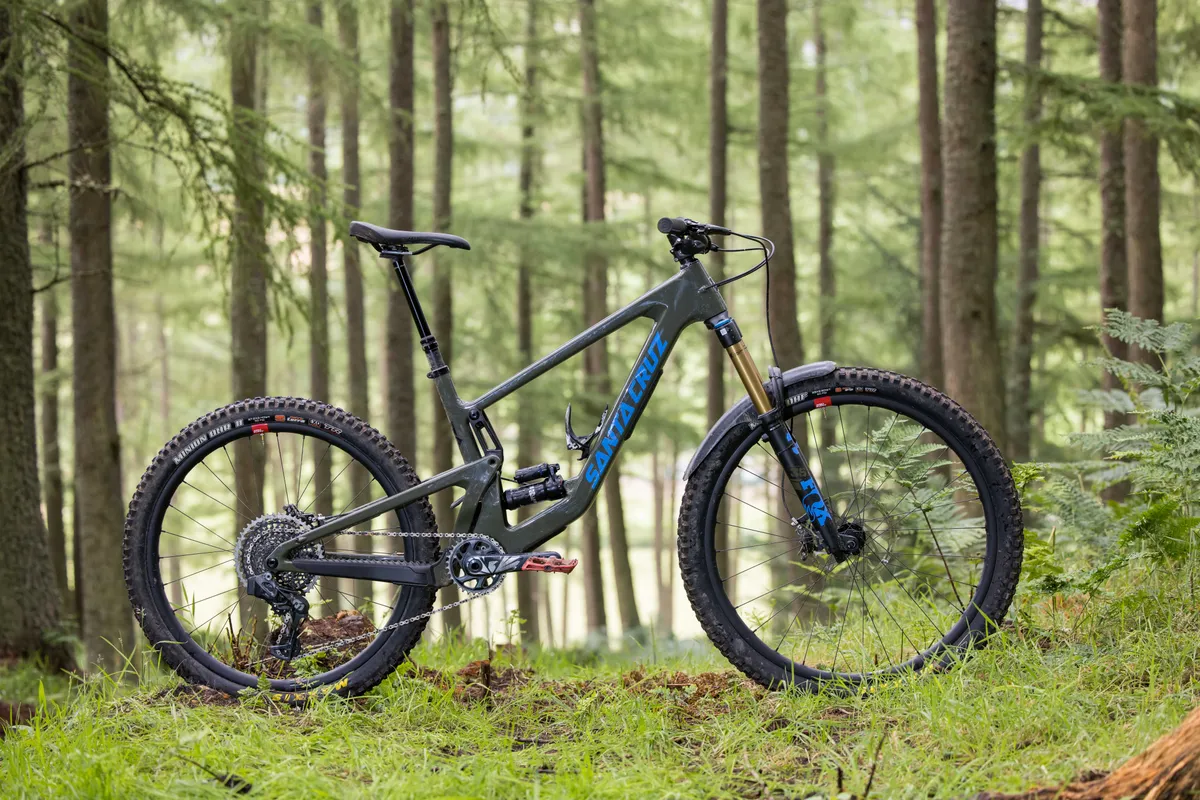
Carbon fibre was once the preserve of top-end bikes, but now features across the price spectrum.
While some manufacturers claim their carbon frames have better strength-to-weight characteristics than aluminium, carbon frames can be more likely to end up scratched or cracked in the event of a crash or accidental bash.
The increased stiffness that carbon is praised for can also be a double-edged sword, sometimes resulting in an overly harsh ride depending on the terrain and the experience of the rider.
Wheel size

Trail and enduro bikes typically have either 27.5 or 29in mountain bike wheels.
Almost all modern enduro bikes come fitted with 29in wheels. This is because the primary goal of an enduro bike is to be stable and capable at high speeds, and the larger wheels provide stability and roll over obstacles better than smaller mountain bike wheel sizes.
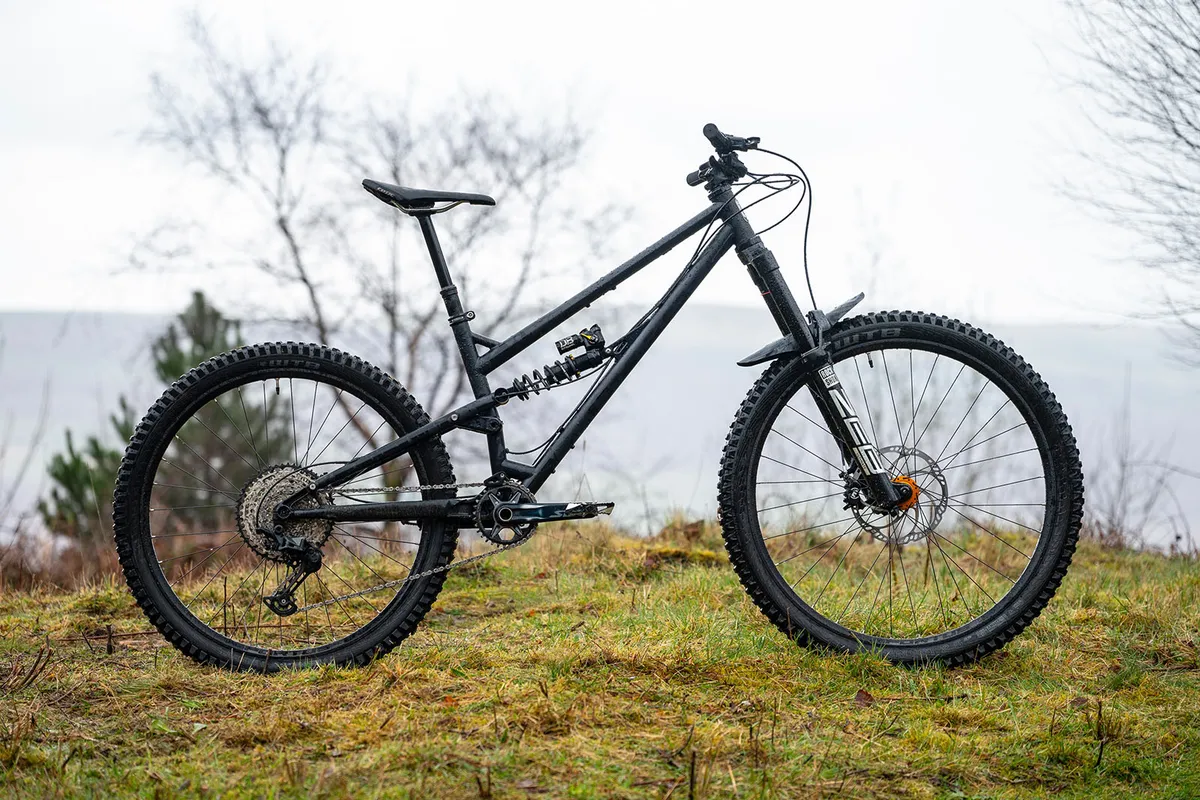
Some enduro bikes come with mullet setups, where there is a 29in front wheel and a 27.5in rear wheel. This mixed-wheel setup is particularly popular with smaller enduro riders who want the benefits of the large front wheel but require an extra bit of backside-to-rear-wheel clearance to move around on the bike.
29in wheels are also a great option on trail bikes, providing stability, smoothing out any bumps and enabling a faster ride. However, if you’re not concerned with speed, and want a bike that's agile and fun on the trail and in the air, a mullet or 27.5in option is sure to put a grin on your face.
Tyres
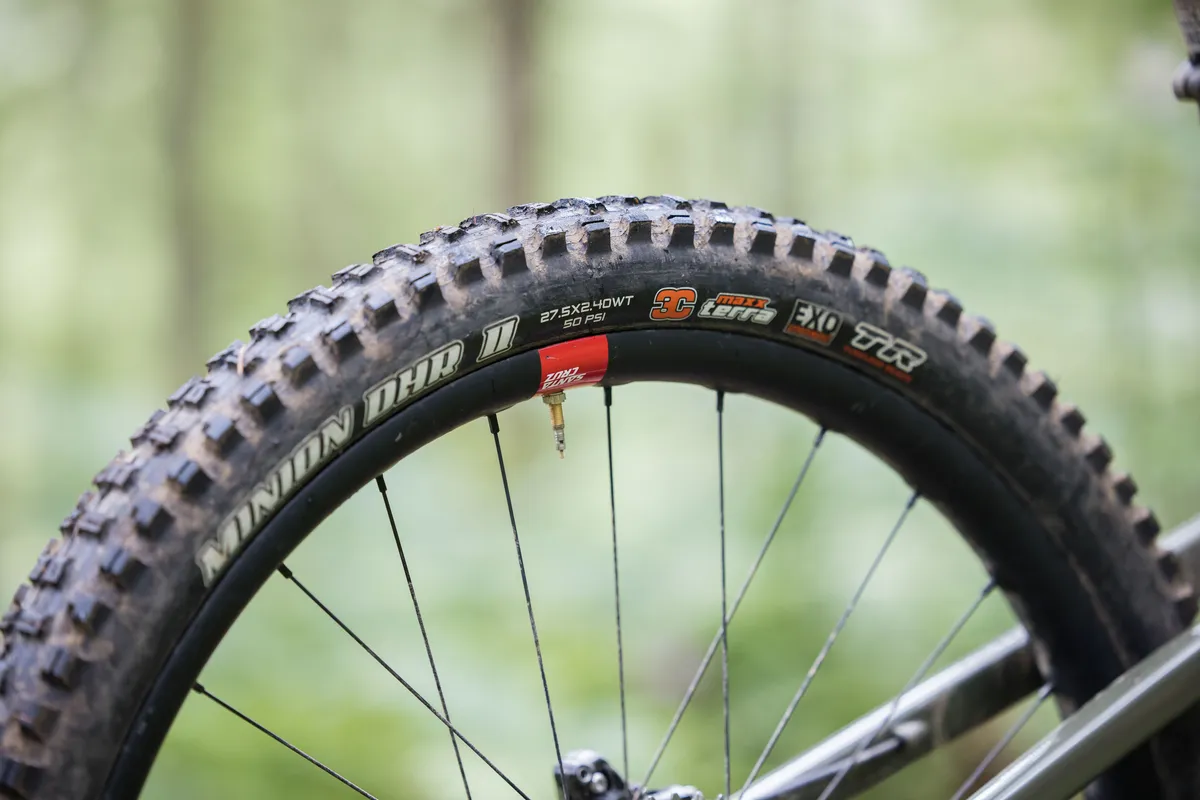
As the only contact point between the rest of the bike and the ground, a set of the best mountain bike tyres will help you get the most out of your mountain bike.
Enduro tyres must offer maximum traction and puncture protection to get you through technical downhill sections. As a result, they often rely on thick casings and soft, grippy rubber compounds. This makes them considerably heavier and slower-rolling than the lighter and more efficient tyres found commonly on trail bikes.
Most brands have a range of casings and rubber compounds available to match every rider. If you ride very aggressively on rocky terrain, you will need a tough casing, such as the Maxxis DoubleDown or Schwalbe SuperGravity, to prevent punctures.
If you mainly ride smoother trails, or you are a very light rider, you can afford to go for a slightly lighter casing, which will roll faster.
Drivetrain and gearing
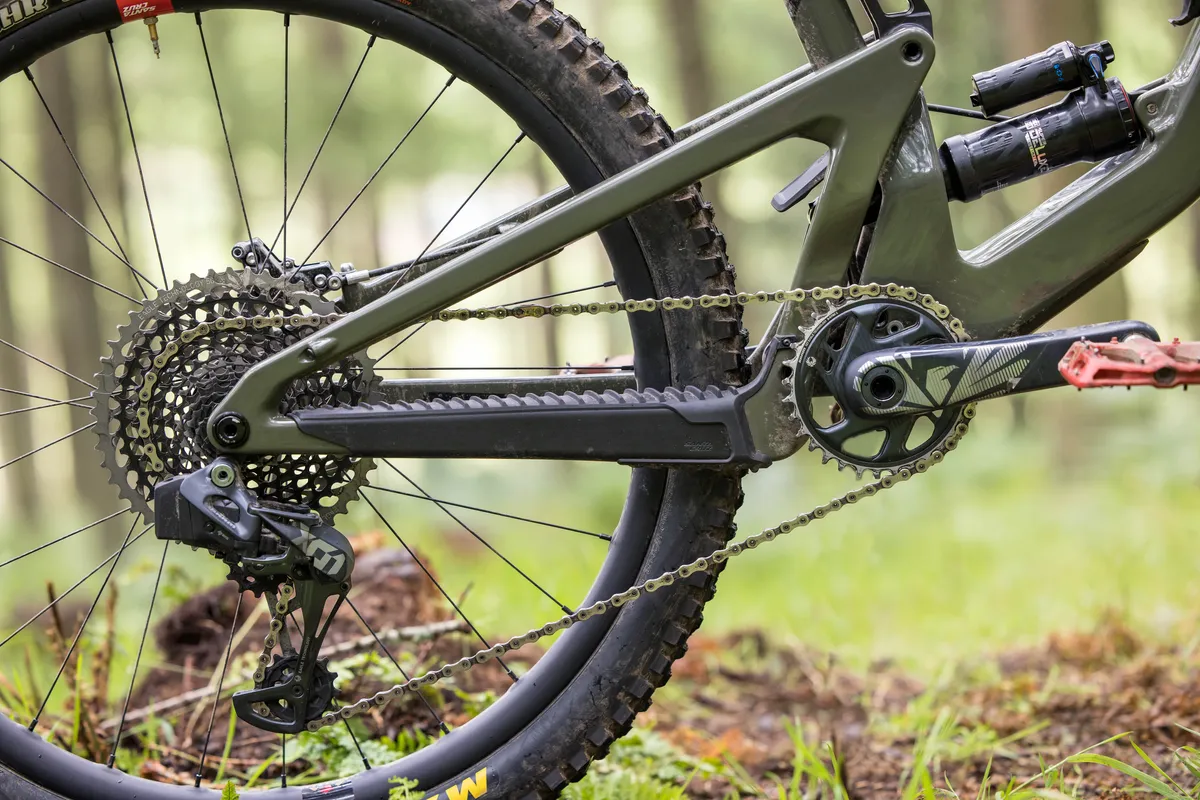
Trail and enduro bikes benefit from the latest 1x drivetrains, which give them a wide range of gears, reliable shifting and great chain security.
There doesn’t tend to be a big difference in groupset components used between the two categories. Enduro and trail bikes benefit from wide-ranging 12-speed cassettes and durable shifters and derailleurs.
Brakes

There can be some differences between the brakes used on trail and enduro bikes.
Enduro bikes will come equipped with powerful quad-piston hydraulic brakes and large disc rotors (200 to 220mm).
Gravity-oriented trail bikes may also feature hydraulic quad-piston brakes, but they may have slightly smaller 180 to 200mm rotors to save weight.
Trail bikes that are closer to the cross-country end of the spectrum will take these weight savings even further with less powerful, dual-piston brakes and smaller 160 to 180mm rotors.
As with tyre choice, if you are a heavier or more aggressive rider, you will benefit from more powerful brakes and bigger rotors, regardless of whether you ride a trail or enduro bike.
Finishing kit and dropper posts
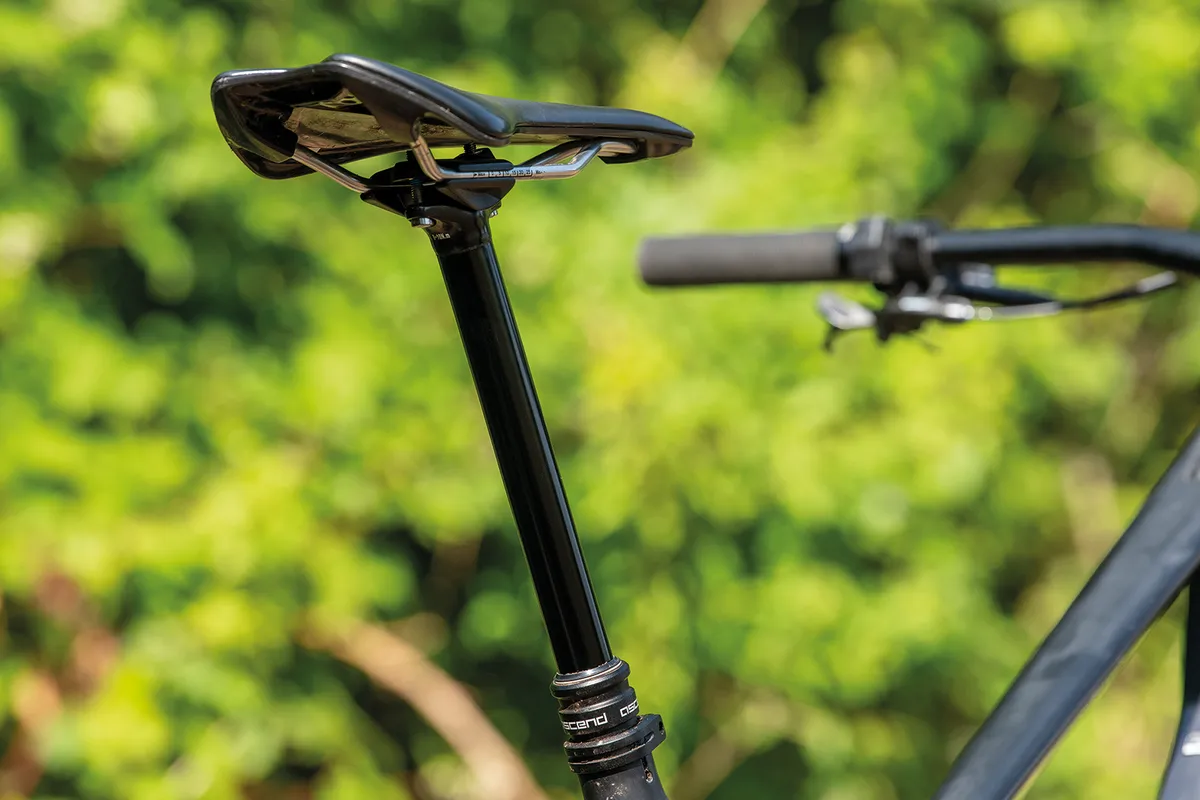
Trail and enduro bikes benefit massively from being fitted with a dropper post.
Dropper-post travel for trail and enduro bikes typically sits in the 125 to 170mm range, with larger frame sizes often having longer-travel dropper posts.
The finishing kit on trail and enduro bikes is usually similar. Most trail and enduro mountain bikes come with a handlebar between 780 and 800mm wide. These can then be shortened if necessary to suit individual preferences.
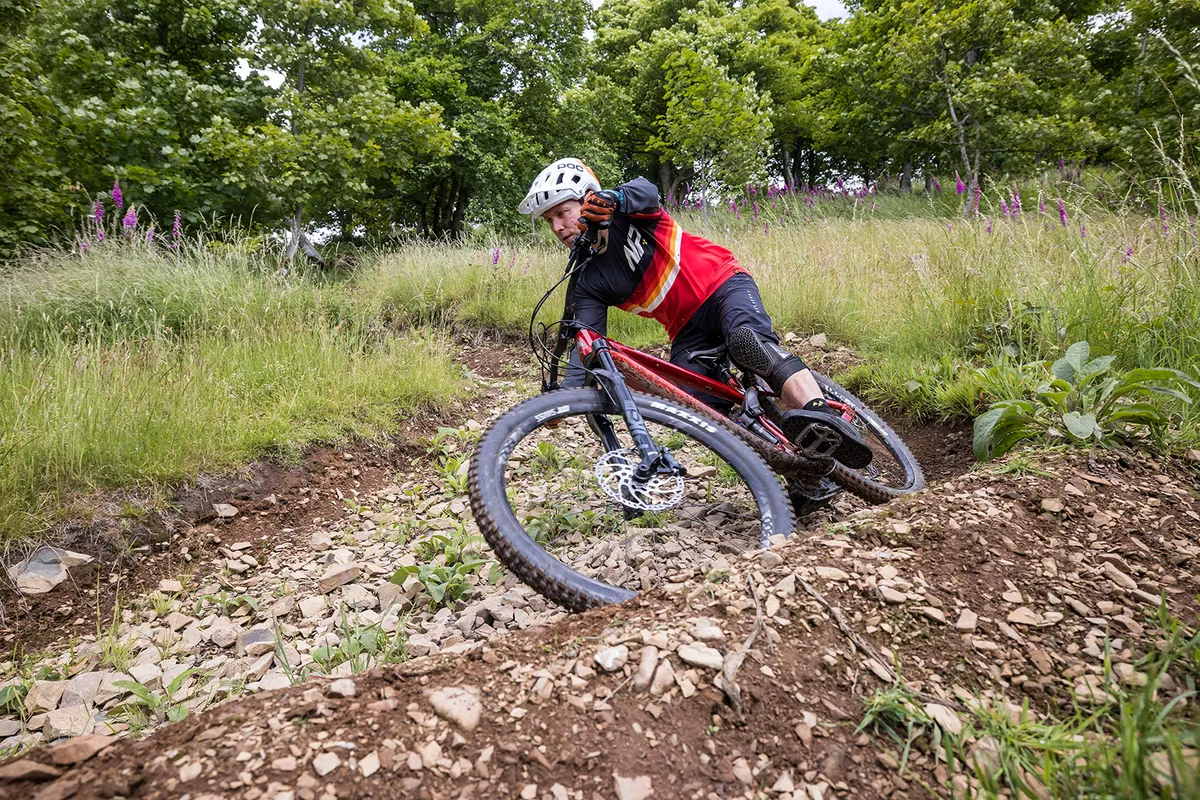
Stem length varies slightly. Enduro bikes often feature a shorter 35 to 50mm stem for more stability at speed.
Trail bikes may come specced with slightly longer stems, usually in the 40 to 60mm range. This improves low-speed steering and helps place you further forward on the bike to weight the front wheel and retain traction on climbs.
As a general rule, the finishing kit on an enduro bike will be slightly heavier and more robust than what you’ll find on a trail bike. There will be some crossover at the ‘aggressive’ end of the trail bike spectrum, which sees enduro and capable trail bikes sharing similar components.
Can you race enduro on a trail bike?
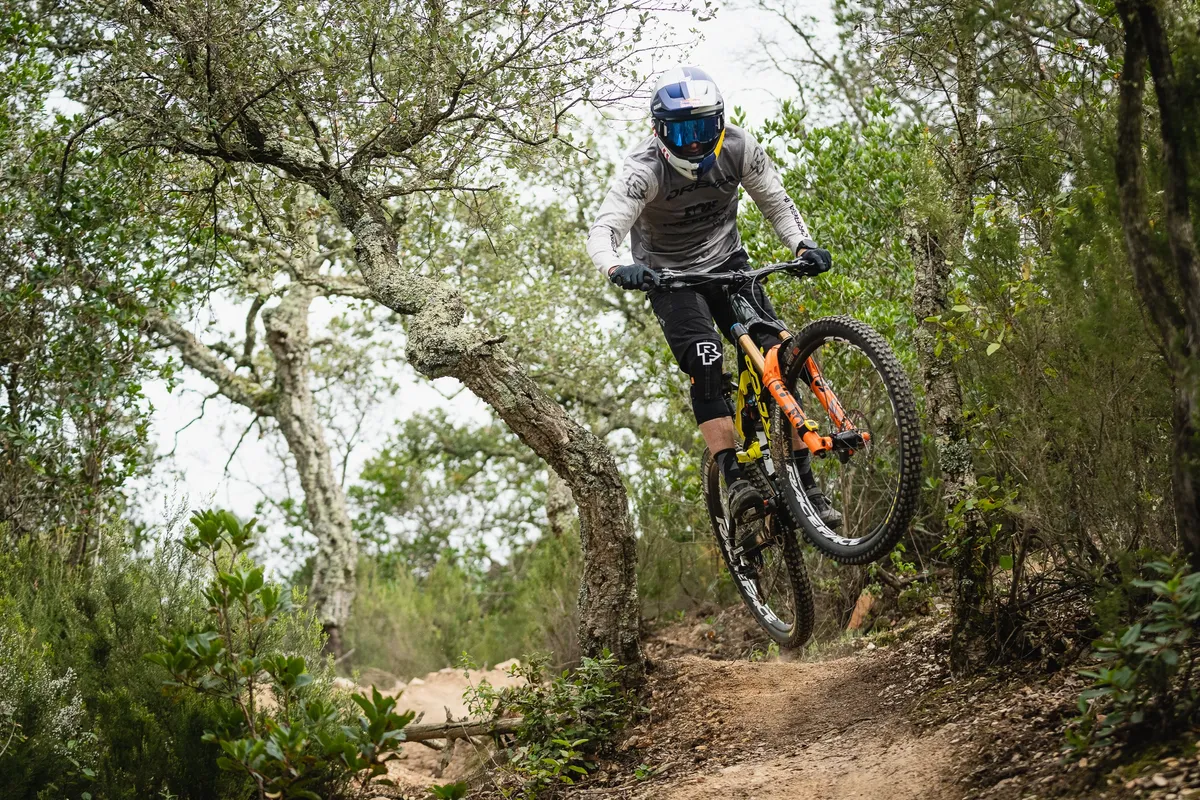
If you want to compete regularly in enduro races, you will have more success and fun on a dedicated enduro bike. However, if you want to enter the occasional enduro race and are wondering if a trail bike will be capable enough, there are a few things to consider.
In theory, a trail bike with upwards of 140mm of suspension travel should be more than capable of getting through an enduro race. Whether or not it’s a comfortable and enjoyable experience will depend on your skill level and the bike you're riding.
If you choose to take your trail bike to an enduro race, we recommend fitting some aggressive tyres and bigger brake rotors (200mm front and 180mm back as a minimum).
You may also want to reconsider your suspension setup to improve your grip and comfort on the trail.
So, should I buy an enduro or trail bike?
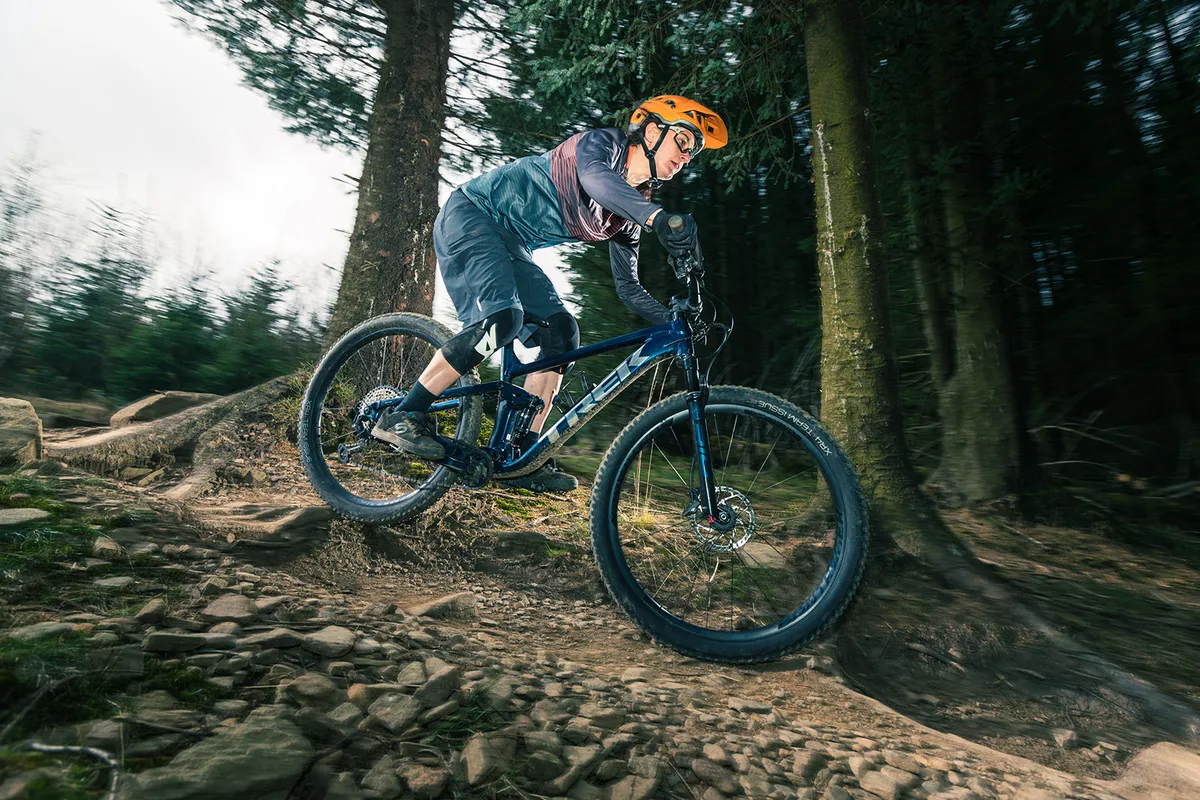
Enduro bikes are the obvious choice if you want a bike specifically for enduro races. However, they can prove a great choice away from racing, too.
If you ride predominantly rough, fast and steep trails, and frequently spend a day at the local bike park or uplift, you will enjoy the capability and confidence-inspiring ride of an enduro bike. While they won’t be the most efficient on the climbs, enduro bikes are designed to get you back to the top of the hill in comfort.
A lightweight trail bike with around 120mm travel is a good choice if you love chasing Strava times on the climbs as much as the descents. These shorter-travel trail bikes will give you the best pedalling efficiency up and downhill, but you will be somewhat limited when the trail gets steep and gnarly.
If your ideal weekend sees you ride off-piste technical descents on Saturday and a lap of the local trail centre red route on Sunday, a capable trail bike with 140 to 160mm of suspension will offer the best of both worlds. Trail bikes like this will deliver an engaging ride on almost any descent, paired with a capable climbing performance.
